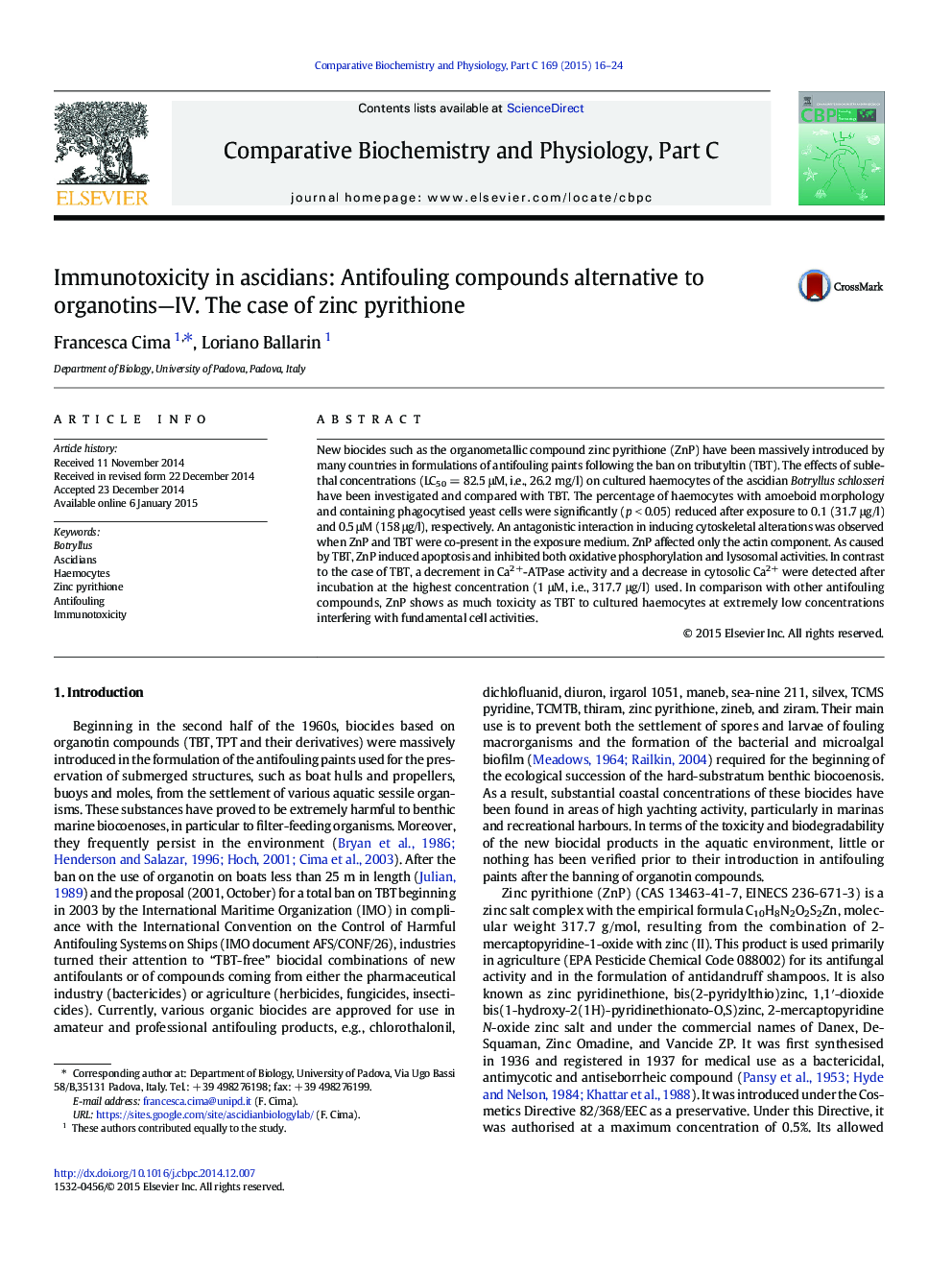| Article ID | Journal | Published Year | Pages | File Type |
|---|---|---|---|---|
| 1977243 | Comparative Biochemistry and Physiology Part C: Toxicology & Pharmacology | 2015 | 9 Pages |
New biocides such as the organometallic compound zinc pyrithione (ZnP) have been massively introduced by many countries in formulations of antifouling paints following the ban on tributyltin (TBT). The effects of sublethal concentrations (LC50 = 82.5 μM, i.e., 26.2 mg/l) on cultured haemocytes of the ascidian Botryllus schlosseri have been investigated and compared with TBT. The percentage of haemocytes with amoeboid morphology and containing phagocytised yeast cells were significantly (p < 0.05) reduced after exposure to 0.1 (31.7 μg/l) and 0.5 μM (158 μg/l), respectively. An antagonistic interaction in inducing cytoskeletal alterations was observed when ZnP and TBT were co-present in the exposure medium. ZnP affected only the actin component. As caused by TBT, ZnP induced apoptosis and inhibited both oxidative phosphorylation and lysosomal activities. In contrast to the case of TBT, a decrement in Ca2+-ATPase activity and a decrease in cytosolic Ca2+ were detected after incubation at the highest concentration (1 μM, i.e., 317.7 μg/l) used. In comparison with other antifouling compounds, ZnP shows as much toxicity as TBT to cultured haemocytes at extremely low concentrations interfering with fundamental cell activities.
